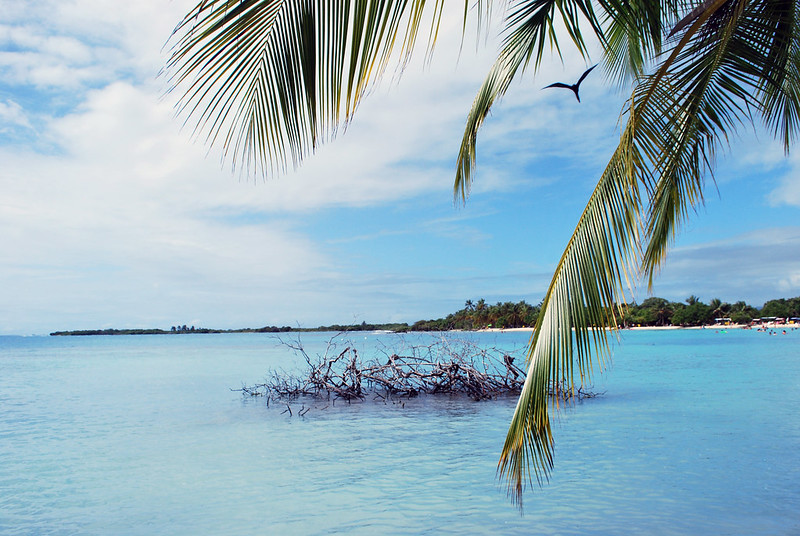A petroleum spill was detected by satellites a few weeks ago on the Venezuelan coast, and in a short time it extended, thanks to the marine current, to Morrocoy National Park. This cove is home to a wide variety of flora and fauna, and the spill affects ecosystems such as mangroves, islets, coral reefs, seagrass meadows, fish communities and sandy beaches.
Environmentalists estimate that the spill corresponds to more than 20,000 barrels of oil. Petróleos de Venezuela, S.A. (PDVSA) authorities did not provide explanations for the causes, but experts assume that the storage tanks failed or the waste treatment at El Palito refinery suffered problems. Biologists and ecologists demanded an early response from PDVSA to avoid such a wide spread, but the company’s environmental damage containment system did not act quickly.
The first reports received by environmental organizations arrived on the last day of July, and they immediately deployed crews with fishermen to corroborate the information and verify the affected areas for the time being. The warnings were activated by the wind conditions, calculating that if no measures were taken, the crude oil would reach the mangroves of Falcón State. A few days later, the activists’ reports indicated the presence of the chemicals in these places.
The oil penetrated the mangrove barriers and clung to the roots in different keys. Scenarios for the future are worrisome, because these problems could result in the asphyxiation and death of the plant. This would affect the entire ecosystem that depends on the mangroves, but it will also have an impact on the regulatory role that the mangroves play in the area, for example, overflows and flooding may occur in nearby communities.
When environmental groups began to notice the fossil oil on the coasts, they deployed volunteer patrols for the cleanup. Government authorities also announced that they are carrying out sanitation work along more than 15 kilometers of coastline, but environmentalists have warned that a simple cleaning does not help correct the problem, because it is necessary to implement timely containment, through barriers to limit the expansion, and they also have to conduct diagnostics to know the scope and determine which ecosystems are affected. From the point of the leak, the hydrocarbon traveled approximately 100 kilometers propelled by the winds towards the natural reserve, for that reason the experts believe that the barriers were not placed in time to minimize the impact.
There is serious concern about the condition of the area, because many of the organisms can recover from natural events or small hits, but cannot overcome the impact of substances such as hydrocarbons. On some level, the beaches can be cleaned, but the reefs cannot. Therefore, although the spill is not one of the largest that has ever happened in the world, the affected locations in Venezuela signify a great ecological concern.
Mangroves and reefs are fragile, and represent the habitat for many species that spawn, adhere to or live on these organisms. In addition, there are a large number of local or migratory birds in the area. In the past, 90% of the corals in Morrocoy National Park died, although the causes are not known, it is presumed that they could be related to sewage or temperature changes. After almost 25 years, new colonies were appearing, but the oil spill could represent a serious setback.
The recovery of structures in the marine reserve is slow, and habitat losses can have an impact on the reduction of marine species, mammals and birds. If the oil remains in the roots of the plants for a long time, they have less chance of recovering and the effects will be evident soon. On the other hand, if the oil is not removed from the water in time, it sinks and causes damage to the seabed.
Mangroves can die from intoxication, fish breathing can be affected because the crude oil sticks to the gills of the fish, while the permanence of the oil can cause the death of a large number of algae and invertebrate species. In addition, this event coincided with the reproductive season of coral species.
Morrocoy is one of the most popular travel destinations in the country. The area is known for its beautiful beaches that receive a large number of tourists every year, so the damage represents both a threat to biodiversity and to the nearby towns that have an economy dependent on coastal attractions and fishing.
The current situation in the country, due to the coronavirus quarantine and the shortage of gasoline, complicates the way specialists from environmental organizations quantify the damage. Although there are some coordinators in the area, they cannot execute actions with all their capacity. It is expected that the government and PDVSA will take responsibility for reversing much of the damage caused. Only the clean-up should be executed for months, in addition technical advice is required for the purification of the ecosystem, for which the type of crude oil and the volume should be known in order to activate monitoring and restoration plans.
Image credit: Edoardo Tacconi

